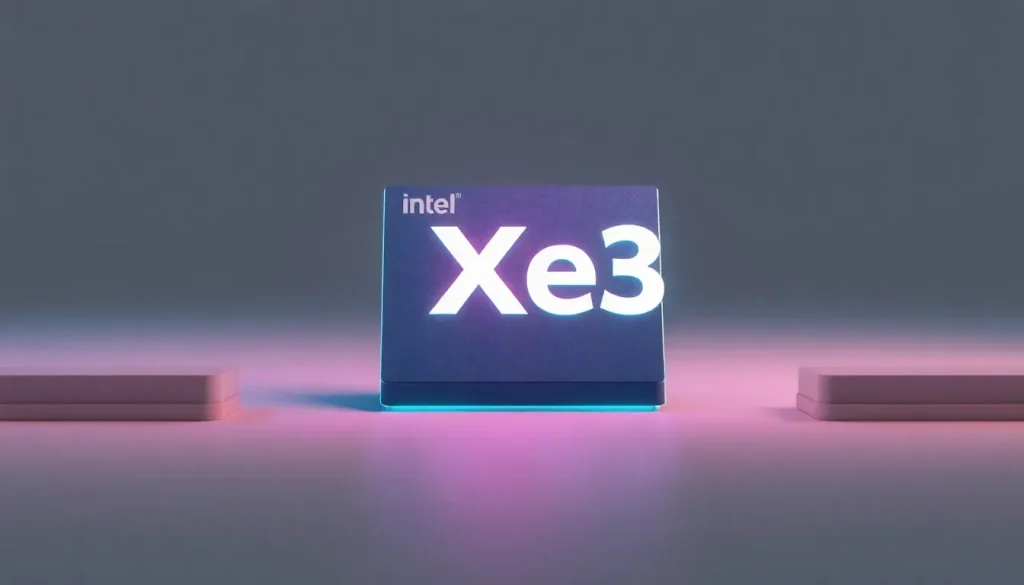Intel Xe3 explained: todo sobre la nueva arquitectura gráfica

As technology continues to evolve, Intel remains at the forefront of graphics architecture with its latest innovation: the Intel Xe3. This new architecture marks a significant leap forward in comparison to its predecessor, the Xe2, introducing a redesigned rendering unit that enhances the configuration of Xe cores and ray tracing units. Whether you're a gaming enthusiast, a developer, or simply curious about the latest advancements in graphics technology, understanding Intel Xe3 is essential.
In this article, we will delve into the architecture of Intel Xe3, explore its advantages over Xe2, and discuss its implications for the future of graphics processing.
Understanding the architecture of Intel Xe3
The Intel Xe3 architecture represents a fundamental redesign aimed at improving both performance and efficiency in graphics rendering. To appreciate this evolution, we can compare the structural components of the Xe2 versus the Xe3.
- Xe2: 4 Xe cores and 4 ray tracing units per unit.
- Xe3: 6 Xe cores and 6 ray tracing units per unit.
This increase in cores means that the Xe3 architecture can deliver significantly enhanced graphical power. Specifically, it boasts improved performance in rasterization, artificial intelligence (AI), and ray tracing. Moreover, its scalable design allows for adaptability to various applications, whether for high-end gaming or more basic graphical tasks.
For instance, the integrated GPU in Intel's upcoming Panther Lake SoC can utilize 12 Xe cores, requiring two Xe3 units. Conversely, a more basic version of the Panther Lake will only need 4 Xe cores, making it feasible to employ one Xe3 unit with two disabled cores.
Key features of the Intel Xe3 unit
The architecture of the Xe3 showcases numerous improvements that together deliver a substantial increase in capabilities. Here’s a breakdown of what each Xe3 unit comprises:
- 6 Xe cores.
- 48 vector units of 512 bits.
- 48 XMX matrices for AI operations of 2,048 bits.
- 6 units for accelerating ray tracing.
- 6 BHV cache blocks.
- 12 ray-triangle intersection calculation units.
- 18 ray tracing calculation pipelines.
- 8 MB of L2 cache.
With a 50% increase in these specifications compared to Xe2, the enhancements are not merely quantitative. Intel has also implemented crucial architectural changes that bolster performance, including:
- Dynamic management for asynchronous ray tracing in the ray tracing unit.
- Optimizations in the vector engine to boost utilization rates.
- Improvements in the fixed-function GFX, featuring a new URB manager for better efficiency.
- A 33% increase in L1/SLM cache capacity.
- Vector units capable of processing 25% more threads, with support for variable register allocation and FP8 quantization.
- XMX units capable of delivering up to 120 TOPs (4,096 ops per clock cycle in INT8 and 8,192 ops per clock cycle in INT4 and INT2).
The Xe3 GPUs will be fabricated using the Intel 3 node, with some versions likely produced on an external 5nm node at TSMC.
Performance comparison: Xe3 vs. Xe2
Intel has shared performance metrics that directly compare the Xe3 to its predecessor, revealing some striking differences. In tests measuring ray-triangle intersections, for example, the Xe3 can double the performance of the Xe2. Similarly, it achieves double the performance in 16x anisotropic filtering under sRGB conditions.
Intel claims that the Xe3 architecture can surpass the Xe2's performance by 50%, while also improving efficiency by 40% in terms of performance per watt compared to Arrow Lake-H.
Furthermore, Intel is collaborating with Microsoft to ensure that cooperative vectors are fully supported in this new architecture. This is vital for advancing towards neural rendering, which requires high-performance processing capabilities.
The integration of cooperative vectors enhances the Xe3’s performance by allowing for the simultaneous execution of neural rendering tasks alongside traditional rendering workloads without interference, making it a powerful tool for developers.
What to expect from Intel Xe3's launch timeline
The launch of the Xe3 architecture is slated for January 2026, coinciding with the release of integrated GPUs in Intel's Panther Lake SoCs. However, the adaptation of this architecture to dedicated GPUs is still a ways off. Intel has yet to provide any confirmation regarding the release timeline for dedicated graphics cards based on Xe3.
Comparative analysis: Ryzen vs. Intel architecture
When considering graphics architectures, a common question arises: how does Intel's Xe3 compare to AMD's Ryzen architecture? Both have their strengths and weaknesses, and the choice between them often depends on intended use cases.
- Performance: Intel's Xe3 architecture has shown promising performance metrics, particularly in ray tracing and AI capabilities.
- Power Efficiency: Intel claims a 40% improvement in performance per watt with Xe3, which might appeal to users concerned with energy consumption.
- Integration: AMD's Ryzen often provides better integrated graphics performance in certain scenarios, particularly for budget builds.
- Software Support: Both architectures are receiving ongoing support from developers, but Intel's partnership with Microsoft for cooperative vectors could give it an edge in upcoming applications.
Both architectures cater to different market segments, and understanding the specific needs—be it gaming, content creation, or general productivity—will guide users in making the best choice.
For those interested in a deeper dive into Intel's new offerings, you can watch this informative video that discusses the Xe3 architecture:
The future of graphics with Intel Xe3
The Intel Xe3 architecture is poised to redefine what is possible in graphics processing, especially as it integrates more deeply into the gaming and AI sectors. As we approach its launch, discussions and expectations will continue to evolve.
With its enhanced specifications and performance improvements, the Xe3 architecture not only sets a new standard for Intel but also pushes forward the technological boundaries of GPU design. As Intel continues to innovate, we can only anticipate what the future holds for graphics technology and how it will continue to shape our interactions with digital environments.




Leave a Reply